Welcome to Club Cobra! The World's largest
non biased Shelby Cobra related site!
- » Representation from nearly all
Cobra/Daytona/GT40 manufacturers
- » Help from all over the world for your
questions
- » Build logs for you and all members
- » Blogs
- » Image Gallery
- » Many thousands of members and nearly 1
million posts!
YES! I want to register an account for free right now!
p.s.: For registered members this ad will NOT show
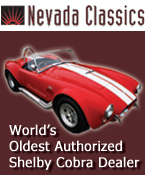 
 Main Menu
Main Menu
|
 Nevada Classics
Nevada Classics
|
 Advertise at CC
Advertise at CC
|
 November 2024
November 2024
|
| S |
M |
T |
W |
T |
F |
S |
| |
|
|
|
|
1 |
2 |
| 3 |
4 |
5 |
6 |
7 |
8 |
9 |
| 10 |
11 |
12 |
13 |
14 |
15 |
16 |
| 17 |
18 |
19 |
20 |
21 |
22 |
23 |
| 24 |
25 |
26 |
27 |
28 |
29 |
30 |
|
 CC Advertisers
CC Advertisers
|
|

07-30-2008, 01:15 PM
|
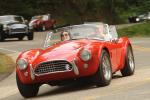 |
CC Member

|
|
|
Join Date: Oct 2004
Cobra Make, Engine: CSX2321
Posts: 1,368
|
|

 Not Ranked
Not Ranked

Quote:
Originally Posted by TButtrick

And that's where the controversy lies. These are right handed threads on the passenger side which would tighten with normal wheel rotation. The wire indicates that the spinner has done just that... tightened. The conventional method is opposite from what I have but nobody seems to understand why it should be any particular way other than its just the way its been done over the years. I'm starting to think the spinners where tightened towards the rear so they didn't tighten so much that they couldn't get them off in the pits during racing?
|
TButtrick,
Sorry to jump in here, but before someone gets hurt, I have to totally disagree with your unconventional method. The correct and only way is RIGHT HAND THREAD ON THE LEFT SIDE and LEFT HAND THREAD ON THE RIGHT SIDE.
Now, I'll try to explain why. At least I'll try to keep it simple without getting into the engineering stuff that I wouldn't understand anyway 
Here is an example of the concept I found.
Stand a roll of racers tape on edge, place a very large wrench socket inside of the tape roll, and proceed to to roll this assembly along a table top. With gravity the socket remains in the bottom of the tape roll, and as both parts roll along together the smaller part inside will rotate faster because of the
smaller diameter.
The corresponding parts on the car are the wheel hub and the large threaded nut. As the car rolls forward both parts are rotating in the forward direction, but the hub will turn slightly faster than the nut, so relatively speaking, the nut on the left side of the car turns clockwise in relation to the wheel as you drive forward, and the nut on the right side turns anti-clockwise, in relation to the wheel. Read the last sentence twice. The nut is turning the opposite way of the hub because the hup is turning faster. Get it?  To make these parts self tightening the threads must be right handed threads on the left side of the car and left handed threads on the right side of the car.
To make these parts self tightening the threads must be right handed threads on the left side of the car and left handed threads on the right side of the car.
Did I convey my thoughts OK?
Of course if you are towing the car from the rear end, everything is reversed 
I'll go take a nap now 

|
-
Advertising


07-30-2008, 01:52 PM
|
 |
Super Moderator

|

|
|
Join Date: May 2001
Location: Fresno,
CA
Cobra Make, Engine: KMP 184/482ci Shelby
Posts: 14,445
|
|

 Not Ranked
Not Ranked
A half bottle of taquilla makes things like this much more understandable.
__________________
Jamo
|

07-30-2008, 02:02 PM
|
 |
CC Member

|
|
|
Join Date: Oct 2004
Cobra Make, Engine: CSX2321
Posts: 1,368
|
|

 Not Ranked
Not Ranked
Quote:
Originally Posted by Jamo

A half bottle of taquilla makes things like this much more understandable.
|
Looks like you've already hit your tequila |

07-30-2008, 02:11 PM
|
 |
Senior Club Cobra Member

|
|
|
Join Date: Feb 2007
Cobra Make, Engine: KMP 539, a Ton of Aluminum
Posts: 9,591
|
|

 Not Ranked
Not Ranked
Quote:
Originally Posted by A-Snake

Looks like you've already hit your tequila
|
Evan is the CC Spelling Bee Champion, not Jamo. |

07-30-2008, 02:28 PM
|
 |
CC Member

|
|
|
Join Date: May 2001
Posts: 1,330
|
|

 Not Ranked
Not Ranked
OK. That's starting to make sense. Let me get back to you after another shot. So then how do I explain what happened to my safety wire. My spinners seem significantly harder to remove after I've driven the car for a while. BTW, this wasn't intentional. Without instructions, I put the spindle marked "L" on the left side or driver's side not realizing that it meant left threads.
Last edited by TButtrick; 07-30-2008 at 02:31 PM..
|

07-30-2008, 02:38 PM
|
|
Senior Club Cobra Member

|
|
|
Join Date: Jul 1999
Location: SF Bay Area,
CA
Cobra Make, Engine: SPF #1019
Posts: 1,657
|
|

 Not Ranked
Not Ranked
1. A-Snake is 100% accurate.
2. I believe that there are two reasons why knock-offs are harder to remove after driving:
a. Heat expansion/contraction of the mating metals may cause them to stick to each other.
b. Similar metals under pressure will seize to each other, as well - if your wheels and knock-offs are both made of the same metal (Al), then over time (driving time?) they will get harder to separate (or knock-off). This is why I was informed to use a "dis-similar" metal based lubricant (ie: Copper) on the hub thread and surface where the knock-off touches the wheel.
Here is the lubricant that I use: http://www.wurthusa.com/project/en/l...th=04.0121.jpg <- I believe it is the CU 1100.
Do we have any "metalurists" to either confirm or deny my simple-ton's understand?
Last edited by Randy Rosenberg; 07-30-2008 at 02:42 PM..
Reason: add web link...
|

07-30-2008, 03:14 PM
|
 |
Super Moderator

|

|
|
Join Date: May 2001
Location: Fresno,
CA
Cobra Make, Engine: KMP 184/482ci Shelby
Posts: 14,445
|
|

 Not Ranked
Not Ranked
Hmmm...maybe I didn't drink 'nugh of that tukeela, but A-Snake's little model ain't working right for me. 
__________________
Jamo
|

07-30-2008, 03:59 PM
|
 |
CC Member

|
|
|
Join Date: Oct 2004
Cobra Make, Engine: CSX2321
Posts: 1,368
|
|

 Not Ranked
Not Ranked
Quote:
Originally Posted by Jamo

Hmmm...maybe I didn't drink 'nugh of that tukeela, but A-Snake's little model ain't working right for me.  |
If you're referring to the racer's tape and socket you can try something more
familiar like a roll of toilet paper with a cigar in the tube.  |

07-30-2008, 04:14 PM
|
 |
CC Member

|
|
|
Join Date: Oct 2004
Cobra Make, Engine: CSX2321
Posts: 1,368
|
|

 Not Ranked
Not Ranked
Quote:
Originally Posted by TButtrick

OK. So then how do I explain what happened to my safety wire.
|
"Originally Posted by TButtrick
This is with right handed threads on the right side and tightens toward the front. As you can see from the picture, the safety wire indicates that the spinner has tightened more after driving. I have a loop in the safety wire that I monitor before each drive."
Based on what you said above, to loosen the nut would have rotated counter-clockwise which is exactly what it did. No more loop. 
If it had tightened it would have rotated clockwise.
You are very lucky that there was safety wire on your wheels! |

07-30-2008, 04:15 PM
|
 |
Super Moderator

|

|
|
Join Date: May 2001
Location: Fresno,
CA
Cobra Make, Engine: KMP 184/482ci Shelby
Posts: 14,445
|
|

 Not Ranked
Not Ranked
Hehehe...sounds like something I can test out while sitting down. 
Ok, I realize you're talking about comparative speeds of the two bodies, in relation to each other. On the driver's side, even though they're moving in the same direction, the slower speed of the outer body in relation to the inner body at some point makes it crawl around the inner body (tightening it, so to speak). On the passenger side, that same comparative crawl would have it untighten but/for the threads being reversed.
But aren't we talking about centrifugal force rather than comparative speed being the motivation for the reversed threads? At some point the two bodies are joined together (threaded on) unless some force is acting to pull them apart?
Isn't this the meaning of life?
__________________
Jamo
|

07-30-2008, 04:24 PM
|
 |
Senior Club Cobra Member

|
|
|
Join Date: Feb 2007
Cobra Make, Engine: KMP 539, a Ton of Aluminum
Posts: 9,591
|
|

 Not Ranked
Not Ranked
Quote:
Originally Posted by Jamo

At some point the two bodies are joined together (threaded on) unless some force is acting to pull them apart?
|
Uh, this is a G-rated thread.  |

07-30-2008, 04:27 PM
|
 |
CC Member

|
|
|
Join Date: Dec 2001
Location: San Diego,
CA
Cobra Make, Engine:
Posts: 2,979
|
|

 Not Ranked
Not Ranked
Can't we just say "put the rights on the left and the lefts on the right" and be done. It's one of those things you just do because it's the correct way. All this talk of Dis-similar and rotational speeds just confuses people.
PS: The hub turns one full revolution in the same amount of time as the spinner or the tire for that matter.
__________________
Remember, It's never too early to start beefing up your obituary.
|

07-30-2008, 04:35 PM
|
 |
CC Member

|
|
|
Join Date: Oct 2004
Cobra Make, Engine: CSX2321
Posts: 1,368
|
|

 Not Ranked
Not Ranked
Quote:
Originally Posted by Jamo

But aren't we talking about centrifugal force rather than comparative speed being the motivation for the reversed threads? At some point the two bodies are joined together (threaded on) unless some force is acting to pull them apart?
Isn't this the meaning of life?
|
"When the hubs are rotating in the wrong direction, the nut will come totally unscrewed very quickly as soon as it becomes the slightest bit loose. With just 0.001 inch difference in diameter the relative motion of the nut to the wheel will be 0.003 inch with each rotation of the wheel. You can work out the math, but with this much rotation the nut will unscrew one complete turn in about 3 miles of road travel. As the clearance increases the relative rotation increases, and you are surely doomed." |

07-30-2008, 04:43 PM
|
 |
CC Member

|
|
|
Join Date: Oct 2004
Cobra Make, Engine: CSX2321
Posts: 1,368
|
|

 Not Ranked
Not Ranked
|

07-30-2008, 04:57 PM
|
 |
Super Moderator

|

|
|
Join Date: May 2001
Location: Fresno,
CA
Cobra Make, Engine: KMP 184/482ci Shelby
Posts: 14,445
|
|

 Not Ranked
Not Ranked
muy goodo socks 
Scott's assplanation is the same one my Dad always gave me when I asked questions about why we did things a certain way for pruning or grafting grape vines: "Because it's the RIGHT way!"
Seemed good 'nugh at the time. 
__________________
Jamo
|

07-30-2008, 09:15 PM
|
 |
CC Member

|
|
|
Join Date: May 2001
Posts: 1,330
|
|

 Not Ranked
Not Ranked
Quote:
Originally Posted by A-Snake

"Originally Posted by TButtrick
This is with right handed threads on the right side and tightens toward the front. As you can see from the picture, the safety wire indicates that the spinner has tightened more after driving. I have a loop in the safety wire that I monitor before each drive."
Based on what you said above, to loosen the nut would have rotated counter-clockwise which is exactly what it did. No more loop. 
If it had tightened it would have rotated clockwise.
You are very lucky that there was safety wire on your wheels! |
OK.. I've had a few more shots of Teguillllla and I'm ready to contemplate. The pic I posted is of the passenger side wheel. The right of the pic is toward the front. The safety wire has slacked meaning the spinner tightened even more toward the front on right hand threads. My head hurts. Seriously, not trying to buck the system but I believe more of what I see. |

07-30-2008, 09:56 PM
|
 |
CC Member

|
|
|
Join Date: Dec 2002
Location: Apopka,
FL
Cobra Make, Engine: Building 289 Lemans / FFR mkIV chassis w/ Bruce Chervenak
Posts: 700
|
|

 Not Ranked
Not Ranked
I think I understand the explanation although, Todd, I have my Vintage hubs on the "correct" way so between the two of us we have this covered and should be fine.  |

07-30-2008, 10:00 PM
|
 |
CC Member

|
|
|
Join Date: Oct 2004
Cobra Make, Engine: CSX2321
Posts: 1,368
|
|

 Not Ranked
Not Ranked

Quote:
Originally Posted by TButtrick

OK.. I've had a few more shots of Teguillllla and I'm ready to contemplate. The pic I posted is of the passenger side wheel. The right of the pic is toward the front. The safety wire has slacked meaning the spinner tightened even more toward the front on right hand threads. My head hurts. Seriously, not trying to buck the system but I believe more of what I see.
|
Ok, let's start with your comment "I have a loop in the safety wire that I monitor before each drive." I took that to mean you had a loop in the wire around midway and if the loop straightened out the knock-off had moved. The wire in the picture is shown more or less straight showing the knock-off has rotated counter-clockwise which would be "loosen" on right hand threads. What am I missing?
Now that I look at your safety wire a few more questions come to mind. The wire looks rusted. Are you not using stainless steel wire? How is the wire wrapped around the segment of the wheel? Did you drill a hole in the wheel as I don't see the wire going around a segment of the wheel.
http://www.whizwheels.com/Tips/safetywiring.html

|

07-31-2008, 02:18 AM
|
 |
CC Member

|
|
|
Join Date: Jun 2004
Location: Leicestershire,
UK
Cobra Make, Engine: Kirkham #523, 427 S/O
Posts: 1,137
|
|

 Not Ranked
Not Ranked
Quote:
Originally Posted by TButtrick

OK.. I've had a few more shots of Teguillllla and I'm ready to contemplate. The pic I posted is of the passenger side wheel. The right of the pic is toward the front. The safety wire has slacked meaning the spinner tightened even more toward the front on right hand threads. My head hurts. Seriously, not trying to buck the system but I believe more of what I see.
|
There could be a number of reasons why you appear to have more slack in your wire, but rest assured, it isn't because your spinners have tightened.
You have your hubs and spinners on the wrong side of your car, please accept the combined wisdom and experience of countless authorities on the subject. I'm sure you won't find a single credible manufacturer that designs them to be the way you have them.
Paul
Last edited by FatBoy; 07-31-2008 at 05:08 AM..
Reason: Minor correction
|

07-31-2008, 05:02 AM
|
 |
CC Member

|
|
|
Join Date: Feb 2006
Location: Gore. New Zealand.,
SI
Cobra Make, Engine: DIY Coupe, F/T ,MkIV.
Posts: 808
|
|

 Not Ranked
Not Ranked

This diagram explains it for the two types of nut, since the cobra originally came with wire wheels that I assume employed the Rudge ( Female- LHT/RHS ) nut, I could understand why everyone assumes that all centerlocks could be the same, however when you actually check the two principles out the above diagram is correct.
Now to add another curve ball, why do some have more problems than others with knock off's coming loose? I think it has more to do with wheel offset, camber and castor angles, and particularly scrub radius and how the cars weight bears on the center nut. For example-imagine a cobra with some positive camber ( wheel/tire out at top), in this situation the center nut will have more load imposed on it than if the car had 0° or negative camber.
Personally I dont have a horse in this race-yet, but one day before I do I intend to jig up a hub & male nut assy in the lathe so that I can spin it in both directions while changing the effective load inputs from side to side by means of a link to the tool post. Only thing I wont be able to do is simulate the effect that brake heat and different rates of expansion might have on these components . I KNOW that can cause a lot of grief from personal experience. Fat Boy, you should have been around that day- steel centerlock wheels on a male alloy hub with RHT/RHS--LHT/LHS, the self tightening process was definitely in action with that setup-- when the hub assy expanded during the race the center nut ( knockoff ) self tightened, when the hub cooled and shrunk it effectively increased the tightness of the center nut to the point where we had to destroy/cut the nut off by drilling/splitting it off the hub. These wheels were used as a set of wets & had given no problems prior when used as wets, but on this occasion the car had made a pitstop with a puncture during a dry race and as no spare was available the [not] so clever crew fitted the wet type tire/wheel.
BTW, look closely at T. Buttricks pics, both spinner( knock off ) & wheel center spoke are drilled for the safety wire.
__________________
Jac Mac
|
 Posting Rules
Posting Rules
|
You may not post new threads
You may not post replies
You may not post attachments
You may not edit your posts
HTML code is Off
|
|
|
All times are GMT -7. The time now is 05:31 AM.
|
|



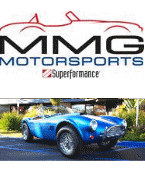
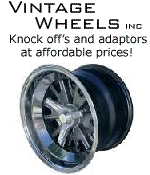


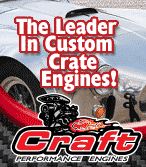
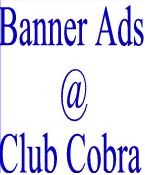



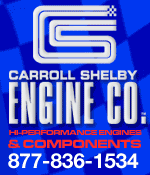















 Linear Mode
Linear Mode



